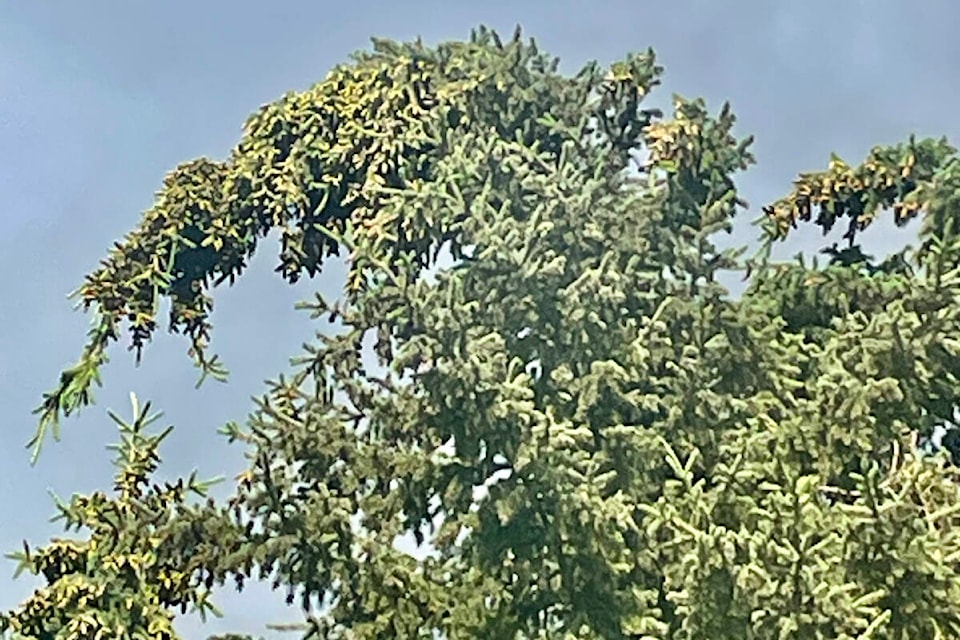I got a call from Duncan Gillespie last week about what might be the cause of an unusually high production of spruce cones this year.
He and his wife Wanda have a property in the Chilcotin and were kind enough to send some photos of spruce trees with tops bent over by a heavy load of cones.
Some tops were so loaded that they actually broke due to the extra weight. After the call I did a quick internet search and could not find any information about a heavy cone crop this year in other parts of B.C. but there were a number of references about bumper crops in many conifer species in past years throughout North America.
Most references discussed droughts and insect attacks as being the main cause of cyclical abnormally high cone production years. Producing cones can be a very energy consuming task for stressed trees so early researchers had some doubts about the relationship.
Subsequent research has shown that many conifers, including spruce, fir and Douglas-fir, produce cones in a two-year cycle. Cone buds are produced in the first year and then cones develop and mature in the second year. White spruce trees, in particular, have produced large amounts of cones in some years following a drought, although Serbian spruce and Norway spruce trees also appear to have higher than normal amounts of cones.
Another interesting aspect of high cone crop years is the impact on the users of coniferous cones including squirrels and some bird species.
Researchers have found that squirrels can clip and store upwards of 12,000 ripe, unopened cones before the cones open on the tree. There will be years of complete cone failure, years of poor to moderate cone production, and, periodically, years in which a large number of cones (10,000 or more) burden a tree.
Bumper years produce such an excess of cones that predators can’t possibly consume them all – guaranteeing the tree opportunities for successful seed dispersal, germination, and recruitment.
The relationship between large crops and the animals that feed upon their seeds is a remarkable, though not fully understood.
For example, ecologists have noticed that prior to a bumper cone crop, squirrels may produce an additional litter of young, presumably to benefit from the extra food later on.
“What tips the squirrels off? One theory suggests that the over-abundance of male pollen cones in the spring cues the squirrels, causing them to increase their reproductive output and hence benefit from the bonanza of cones that will follow by summer’s end.”
Other vertebrate cone seed predators along with red squirrels include red-backed voles, cedar waxwings, black-capped and boreal chickadees, red-breasted nuthatches, common redpolls, white-throated sparrows, pine grosbeaks, and pine siskins.
Time will tell what may happen to our forest areas if we get above average drought cycles resulting in broken tree tops and possibly wasted cones due to over production. One more thing to monitor in the anticipated changes brought on by climate change.
news@wltribune.com
Like us on Facebook and follow us on Twitter
